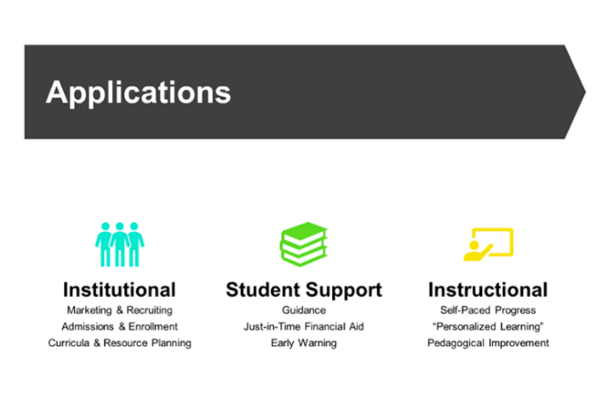4. Emerging Technologies: Artificial Intelligence
4.1. Focusing on AI’s Affordances for Teaching and Learning
Artificial intelligence (AI) is a daunting topic as there are so many issues with respect to its use in education. AI is also currently going through yet another period of extreme hype as a panacea for education, currently being at the top of the peak of inflated expectations, but this hype is driven mainly by successful applications outside the field of education, such as in finance and marketing. Furthermore, the term ‘AI’ is increasingly being used (incorrectly) as a general term for any computational activity.
Even in education, there are very different possible areas of application of AI. Zeide (2019) makes a very useful distinction between institutional, student support, and instructional applications (See Figure below).

Although AI applications for institutional or student support purposes are very important, this chapter is focused on the pedagogical affordances of different media and technologies (what Zeide calls ‘instructional’ applications). In particular, the focus in this section will be on the role of AI as a form of media or technology for teaching and learning, its pedagogical affordances, and its strengths and weaknesses in this area.
Moreover, AI is really a sub-set of computing. Thus, all the general affordances of computing in education set out in this chapter will apply to AI. This section aims to tease out the extra potential that AI can offer in teaching and learning. This will mean particularly focusing on its role as a medium rather than a general technology in teaching, which means looking at a wider context than just the computational aspects of AI, in particular its pedagogical role.
